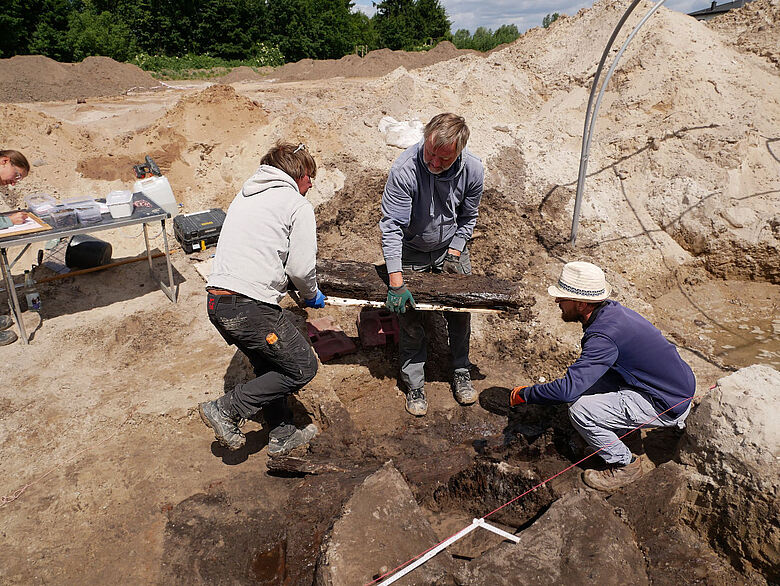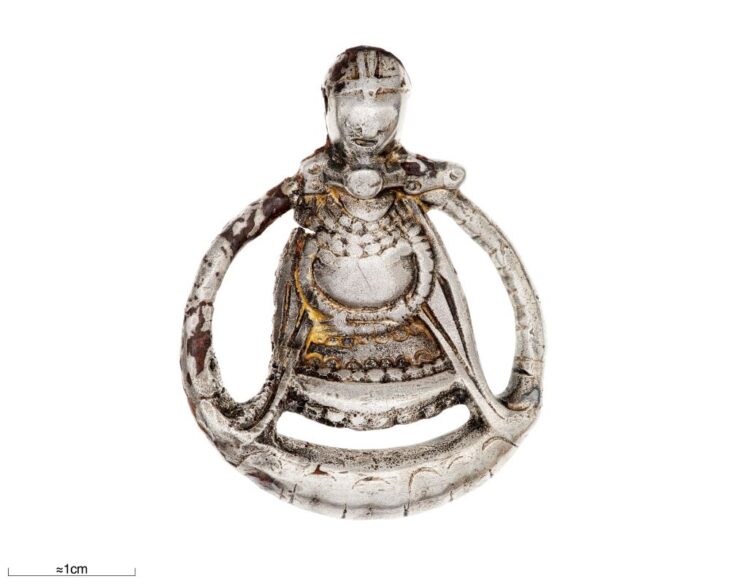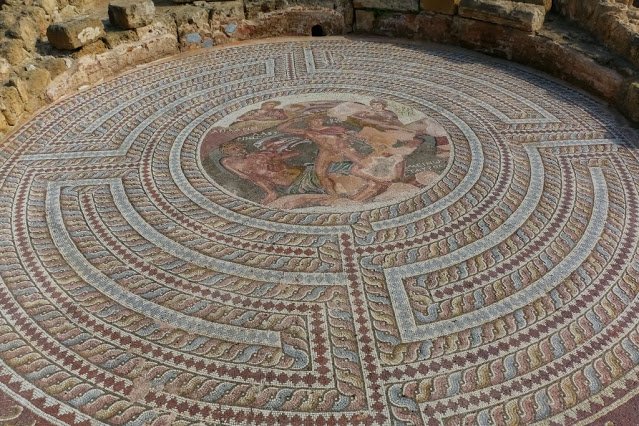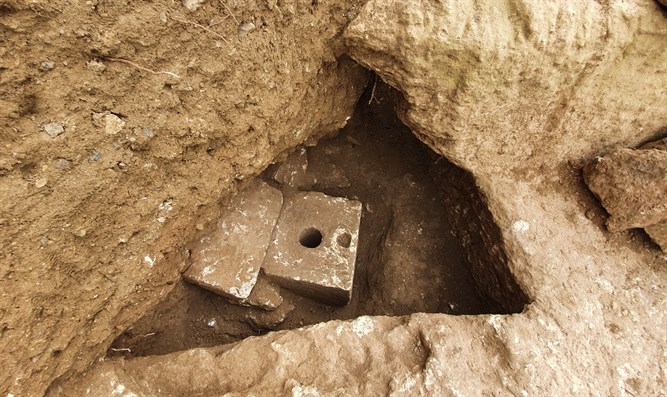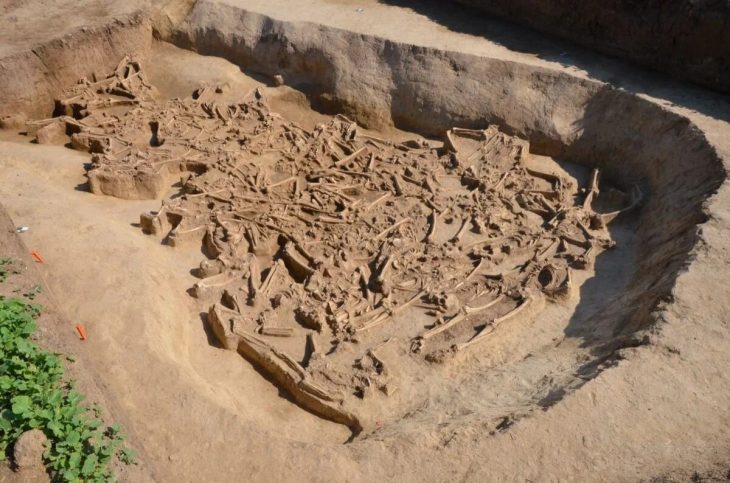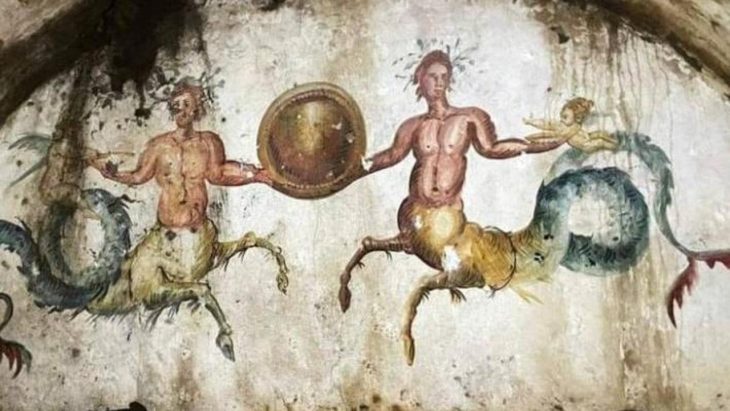Archaeologists have uncovered a rare and mysterious Roman-era burial in Delbrück-Bentfeld, Germany, revealing a unique glimpse into the region’s ancient past. The discovery, made during a months-long excavation led by the Westphalia-Lippe Regional Association (LWL), includes the cremated remains of a presumed Germanic warrior who may have once served in the Roman military.
Discovered among nearly 400 archaeological features, this enigmatic grave revealed charred human remains and significant Roman-period grave goods, including a lance tip, brooches, a broken bone comb, firesteel, and an intricately decorated animal-head belt buckle—possibly part of a Roman soldier’s uniform. This is the first time such military gear has been unearthed in situ in East Westphalia, rather than found as isolated surface artifacts.
Archaeologists believe the individual may have been a Germanic warrior with direct experience in Roman service, offering a rare and intimate glimpse into the lives of frontier soldiers during the 2nd to 5th centuries CE.
“This find is exceptional,” said excavation director Sven Knippschild. “It not only confirms military ties between local populations and the Roman Empire, but also shows how deeply intertwined these cultures were during late antiquity.”
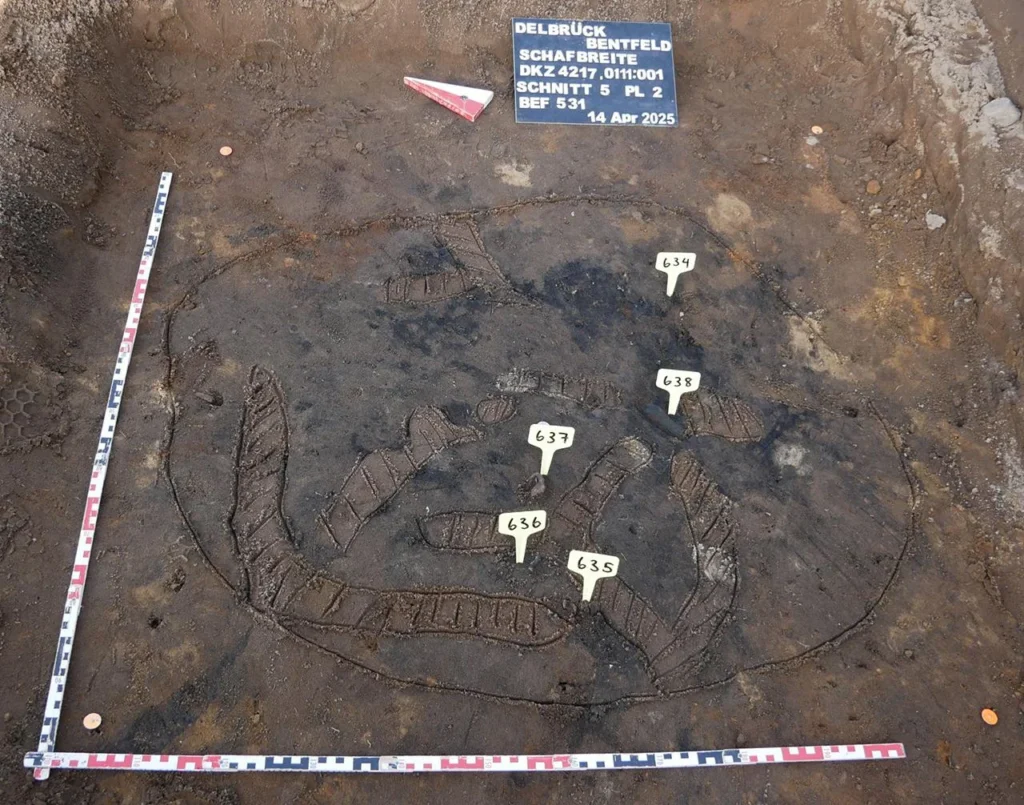
Adding to the intrigue was the discovery of a Migration Period well at the close of the excavation. Initially mistaken for a livestock watering hole, the structure turned out to be a deep shaft constructed from hollowed-out tree trunks. Inside were remarkably preserved organic materials: fragments of leather, wooden wattlework, and even a delicate insect wing—exceptional preservation for a 1,600-year-old site.
📣 Our WhatsApp channel is now LIVE! Stay up-to-date with the latest news and updates, just click here to follow us on WhatsApp and never miss a thing!!
A rune-like inscription carved into one of the wooden beams suggests the timber may have originated from a house and was later repurposed. Above the well, archaeologists found a charcoal-rich layer filled with charred bones, glass beads, and other artifacts—potentially evidence of a ritualistic burial or symbolic decommissioning of the well.
Beads discovered in this layer included a large green glass bead and two smaller fragments—clear and blue—possibly remnants of a hasty or symbolic cremation.
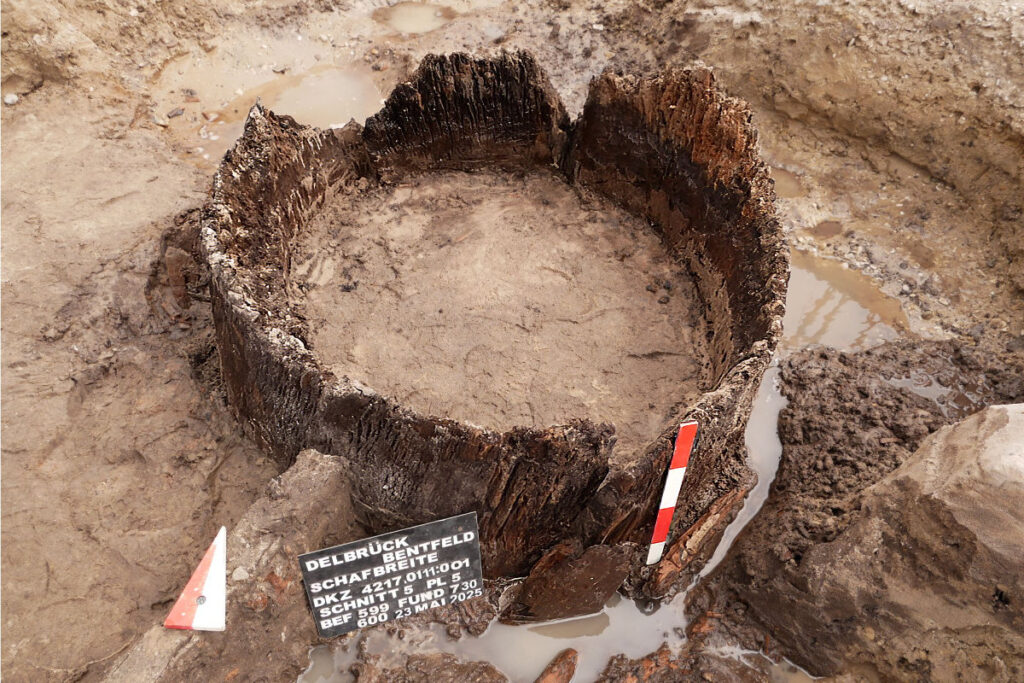
The burial and associated discoveries are now the subject of intensive scientific analysis. Dendrochronology will help date the wooden beams, while radiocarbon testing, anthropological assessments, and archaeobotanical studies aim to reconstruct the burial environment and cultural practices from over 1,600 years ago.
The excavation was launched in advance of a new residential development in the Schafbreite area. With fieldwork now complete, construction is set to proceed. However, local officials emphasized the importance of preserving the past even as they build for the future.
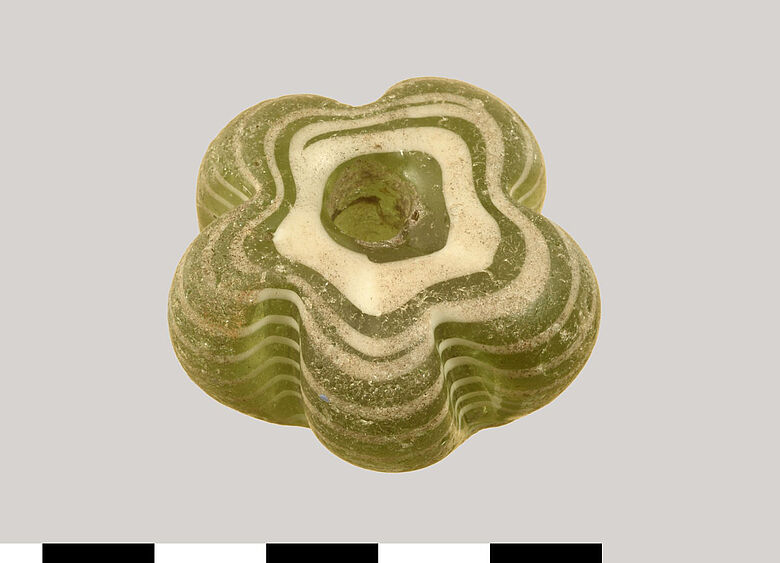
“We’re proud of both the progress in housing and the extraordinary archaeological work that’s been done here,” said Delbrück Mayor Werner Peitz. “This discovery adds a vital chapter to our regional history, one that we are committed to safeguarding and sharing.”
As further research continues, the mysterious burial of Delbrück-Bentfeld may yet reveal more secrets—about life, death, and cultural exchange along the edges of the Roman world.

Westphalia-Lippe Regional Association (LWL)
Cover Image Credit: Recovery of structural timbers from the well shaft. EggensteinExca/S. Knippschild

